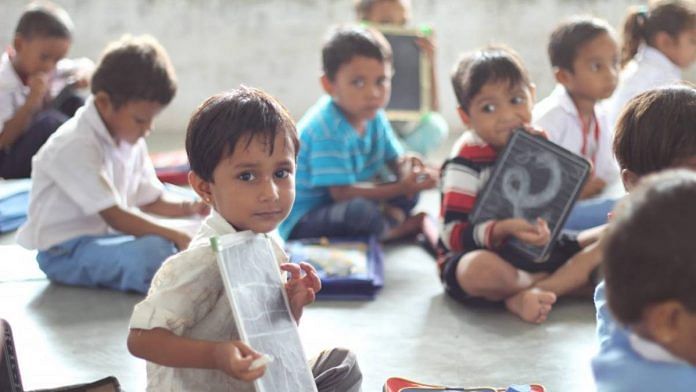
New Delhi: Carrying out linguistic mapping, developing the curriculum in different regional languages and adopting a bi-lingual approach — these are some of the ways in which the Ministry of Education (MoE) aims to launch its plan of encouraging the imparting of education in the students’ mother tongue.
The idea of imparting education in one’s mother-tongue to students ranging from school to universities had attracted a lot of interest from both students and parents after it was advocated in the new National Education Policy (NEP) released last year.
However, the idea has also raised doubts on what will be the medium of education in schools with a high cosmopolitan population. Some parents expressed worry about whether the move would discourage English learning.
To put all such doubts to rest, the education ministry has come out with more details on the implementation of the plan. The ministry Thursday released SARTHAQ, a document which provides a guideline on the execution of the NEP. How to impart education to students in their mother tongues is one of the many points discussed in the document.
Linguistic mapping
The document directs institutes to start with linguistic mapping to identify which language is widely spoken in an area and understood by students.
“Linguistic mapping in selected areas can be done with simple formats like [finding out the] number of languages spoken by people residing in that area, student wise strongest language, students speaking more than one of those languages, language/s spoken by teachers of that area, etc,” the document suggests.
Inter-state border areas, areas with a high migrant population and remote tribal areas should be the first to undergo such mapping.
“In schools in these areas, the medium of instruction could be the local/regional language spoken by the children. For example, there will be several Odiya-speaking pockets in border areas of Andhra Pradesh, or Konkani speaking pockets in border areas of Maharashtra, Gujarati speaking pockets in border areas of Rajasthan, etc,” the document explains.
Once the languages have been identified, the curriculum should be developed in theses languages, it explains, adding that states should work on finding trained teachers who can speak the local language of the area for those studying in classes 1 to 5. Once the teaching staff has been identified, the imparting of education in the students’ mother tongue can be initiated.
Two-language theory
Once the priority areas are taken care of, mother tongue instruction can be spread out to other schools in a phased manner.
The government has suggested a bi-lingual approach for this.
“The regional/state language may continue to be the medium of instruction. However, the language spoken by the child at home may be used and developed by teachers at least in the oral domain during classroom [for students] from pre-school onwards,” the document states.
Teachers have also been instructed to establish links between mother tongues and the medium of instruction.
“Wherever possible, mother tongues may be introduced as medium of instruction in foundational years, while the state language may be introduced slowly by class III,” it adds.
States and union territories have been asked to issue notices at the earliest, informing teachers to start teaching all subjects, language and non-language such as mathematics, through this bilingual approach, to students of classes 1 to 5.
“This would mean, that the Hindi books in Chhattisgarh or in Bundelkhand area can be orally taught in Chhattisgarhi or Bundelkhandi as the link language, and slowly between class I to V, children can be brought to understanding and speaking Hindi. In predominantly tribal areas, teachers who belong to these areas should be identified to ensure that their mother tongue becomes the link for their education,” the document adds.
The document also directs states to organise training teachers for this bi-lingual approach.
“The State Council of Education Research Training (SCERTs) will initiate development of such training modules in 2021-22, after mapping the mother tongue requirements of students in various areas,” the document informs.
Some experts have, however, in the past expressed doubts on the wisdom of imparting education in one’s mother tongue. In an increasingly connected and global society, choosing one’s mother tongue over English may not prepare students to face the real world, they felt.
(Edited by Poulomi Banerjee)
Subscribe to our channels on YouTube & Telegram
Why news media is in crisis & How you can fix it
India needs free, fair, non-hyphenated and questioning journalism even more as it faces multiple crises.
But the news media is in a crisis of its own. There have been brutal layoffs and pay-cuts. The best of journalism is shrinking, yielding to crude prime-time spectacle.
ThePrint has the finest young reporters, columnists and editors working for it. Sustaining journalism of this quality needs smart and thinking people like you to pay for it. Whether you live in India or overseas, you can do it here.